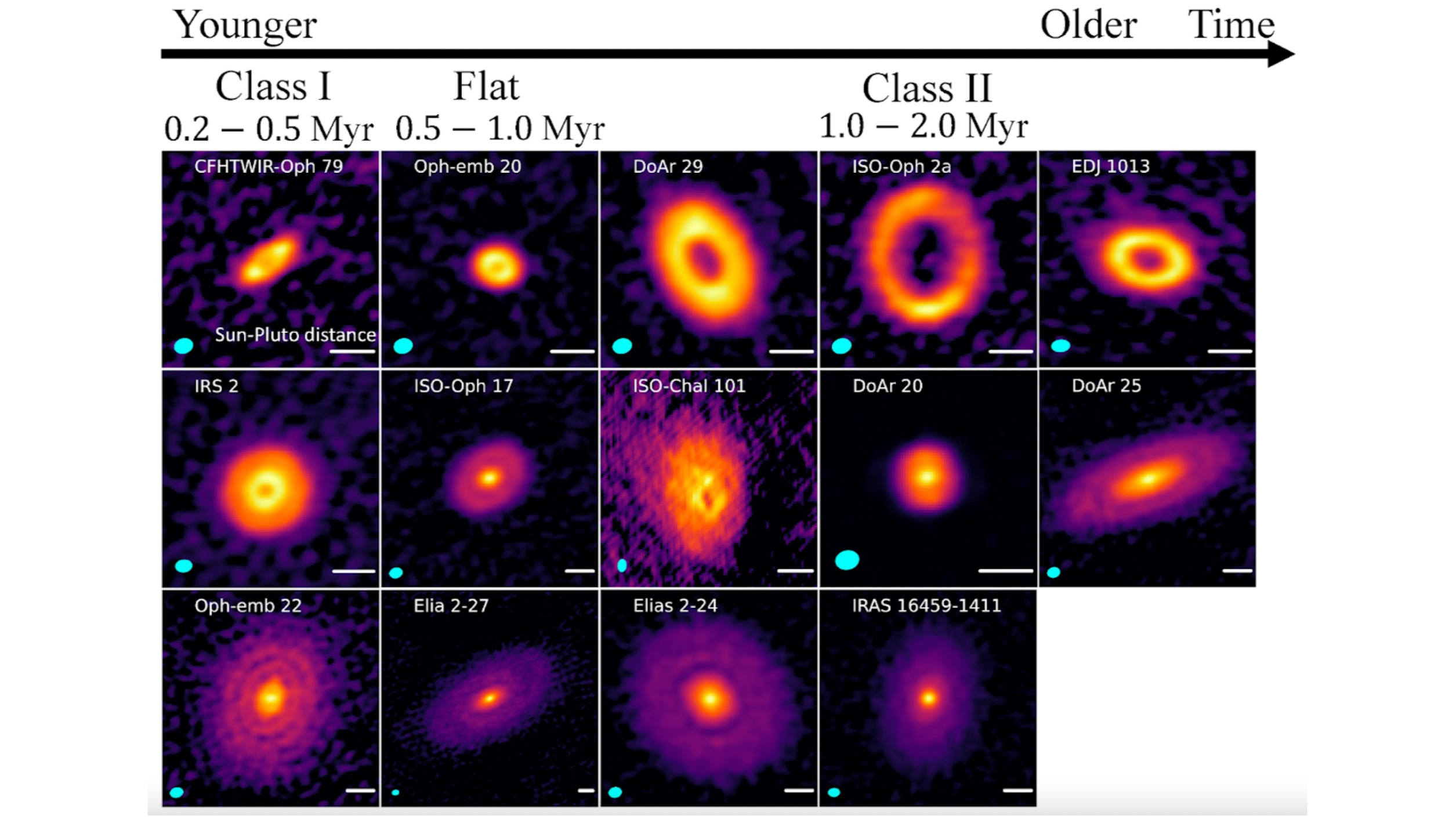Planets can form much faster than thought, new ALMA telescope photos suggest
ALMA has spotted ring and spiral structures in protoplanetary disks just 300,000 or so years old.

Clouds of dust and gas not far from our solar system are giving astronomers a rare glimpse into the earliest stages of planet formation.
These clouds, which are between 200,000 and 500,000 years old and lie within 700 light-years of Earth, have been spotted hosting dusty, gas-rich disks around a central star — the birthplaces of planets. Photos of these features, captured by the Atacama Large Millimeter/submillimeter Array (ALMA), were unveiled on Monday (Jan. 8) at the American Astronomical Society conference being held in New Orleans and online.
The pictures, part of an upcoming paper reporting the findings, shine a spotlight on protoplanetary disks in a few well known molecular clouds including Ophiuchus, Chamaeleon I, and Cor Australis, among others.
Related: Meet ALMA: Amazing photos from the giant radio telescope array
The disks appear "donut-shaped, with a large central cavity," said Cheng-Han Hsieh of Yale University in Connecticut. Hsieh presented early results from the ongoing research in a press briefing on Monday.
Several other disks were spotted flaunting multiple rings and spiral structures. "This is possibly telling us that giant planet formation begins at the very early stage after protostar formation," Hsieh said.
The new images add more evidence to challenge the prevailing wisdom, which holds that planet-forming disks need at least two million years to produce worlds like those in our own solar system.
Breaking space news, the latest updates on rocket launches, skywatching events and more!
A revamped idea of how quickly planets can form came in August 2022, when astronomers found the youngest exoplanet ever discovered, a gassy world 395 light-years from Earth and merely 1.5 million years old.
However, precisely when the process begins within protoplanetary disks "is one of the big questions of planet formation," said Hsieh. The newly detected rings and gaps in protoplanetary disks could provide important clues, but they "are very hard to find," he added. The difficulty comes from immensely dusty disks that block out starlight, pushing the limits of our telescopes.
"However, finding them is very important because they tell us how early planet formation begins," Hsieh said.
In addition to the donut-shaped disks, the new ALMA observations reveal that protoplanetary disks can also be filled with gas and dust, which "raise interesting questions of what kind of planetary systems will these two populations evolve into," Hsieh said.
Future studies of early protoplanetary disks may reveal which of the two kinds of disks our own solar system evolved from.

Sharmila Kuthunur is an independent space journalist based in Bengaluru, India. Her work has also appeared in Scientific American, Science, Astronomy and Live Science, among other publications. She holds a master's degree in journalism from Northeastern University in Boston.

